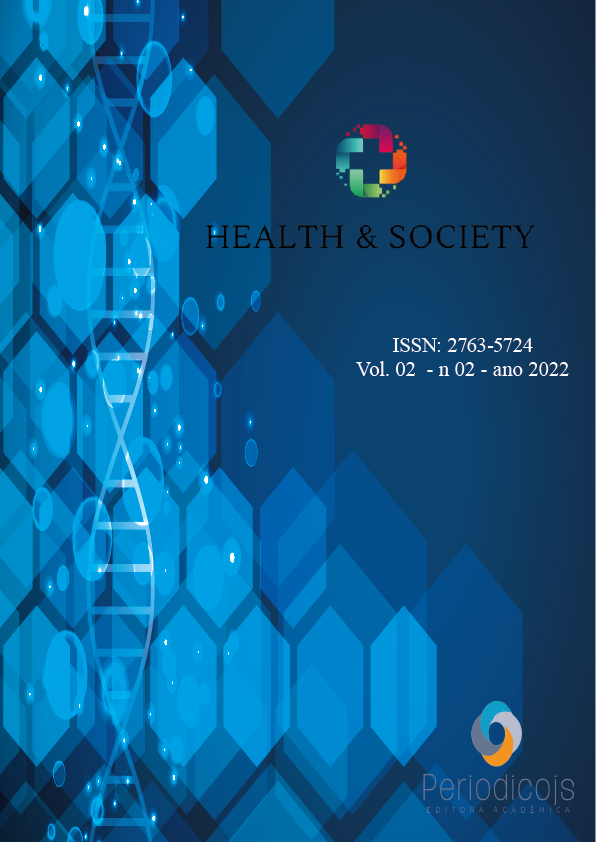Resumo
Diabetes mellitus arises as a result of insulin resistance or a decrease in its production. This work consists of analyzing the various immunological and pathophysiological factors of diabetes mellitus. This is a bibliographic, descriptive, qualitative review, having as a source of researching books, guidelines and articles in the authors’ personal collection and internet. In the case of type I diabetes mellitus, its development occurs through genetic alterations located mainly on chromosome 6, resulting in immunological reactions mediated by inflammatory cytokines such as IL-6 and TNF-α in the sense of directly attacking the pancreatic islets, reducing the population of producing cells. of insulin. On the other hand, in type II diabetes mellitus, it is the adipose tissue, which secretes the same inflammatory cytokines that act by antagonizing insulin, despite a strong association with heredity and some genetic factor that has not yet been clarified. This increased reactivity of the immune system also impacts in association with other immune-mediated diseases, a more severe condition and an increase in the inflammatory response in infectious diseases. We conclude from the research carried out, the importance of the genetic and immunological factor involved in diabetes mellitus opening doors for the creation of new treatments and also greater care for patients given their greater morbidity.
Referências
BALDA, C. et al. Aspectos imunológicos do Diabetes Melotus Tipo 1. Revista de Associação Médica Brasileira, v.2, n.45, 1999.
BRASIL. Ministério da Saúde. Caderno de Atenção Básica: Diabetes Mellitus, Brasília, 2006.
CAMPOS, K. et al. Obesidade e Resistência à insulina, v.34, n.9, 2006.
DIB, S. Heterogeneidade do diabetes melito tipo 1. ArqBrasEndocrinolMetab,São Paulo, v.52, n.2, p.205-218. Disponível em <http://www.scielo.br/scielo.php?script=sci_arttext&pid000427302008000200008&lng=en&nrm=iso>. accesson 30 May 2015.
FERREIRA, C. Características epidemiológicas de pacientes diabéticos da rede pública de saúde - análise a partir do sistema Hiperdia. Arquivo Brasileiro de Endocrinologia, 2009.
FIGUEIREDO, D. M. E RABELO F. L. A. Diabetes insipidus: principais aspectos e análise comparativa com diabetes mellitus Diabetes insipidus: mainaspectsandcomparativeanalysiswith diabetes mellitus. Disponível em: <http://www.uel.br/revistas/uel/index.php/seminabio/article/viewFile/4344/3648>. Acesso em: 30 maio. 2015
GUYTON, A.C.; HALL, J.E. Tratado de Fisiologia Médica. 12ª ed. Rio de Janeiro, Elsevier Ed., 2011.
LUCENA, J. Diabetes Melitus tipo 1 e tipo 2. São Paulo, 2007. Disponível em: <http://arquivo.fmu.br/prodisc/farmacia/jbsl.pdf>
MEDCURSO. Endocrinologia: Diabetes mellitus e Obesidade. Vol. 3, 2014.
M, SILVA; M, DAVINI. Marcadores Genéticos e Auto - Imunes do Diabetes Melito Tipo 1: da Teoria para a Prática. Arquivos Brasileiros de Endocrinologia Metabólica, v.52, n.2, 2008.
P, SESTERHEIM; D, SAITOVITCH; H, STAUB. Diabetes mellitus tipo 1: multifatores que conferem suscetibilidade à patogenia auto-imune. Scientia Médica, v.17, n.4, 2007.
REINEHR, T. Type 2 diabetes mellitus in children and adolescents. World Journal of Diabetes, v.6, n.4, 2013.
SEINO, Y. et al. Report of the committee on the classification and diagnostc criteria of diabetes mellitus. Journalof diabetes investigation, v.5, n.1, 2010.

Este trabalho está licenciado sob uma licença Creative Commons Attribution 4.0 International License.
Copyright (c) 2022 Health and Society





